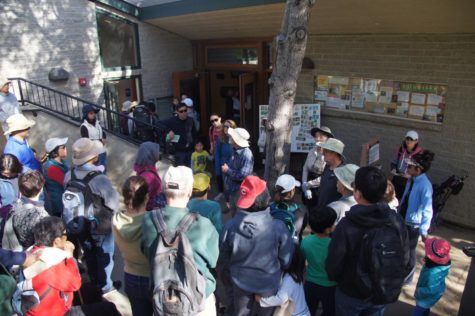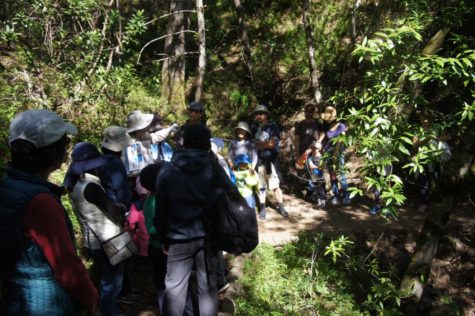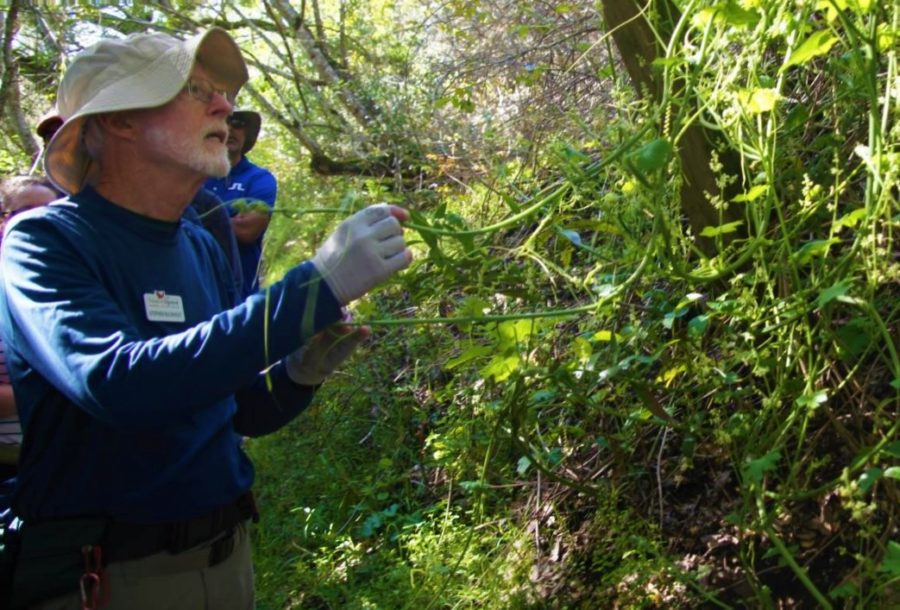After a rainy couple of months, San Mateo residents were more than excited to enjoy a sunny walk in the historical and diverse Edgewood Nature Reserve.
Last Saturday, March 16, 60 people gathered outside the small educational center at Edgewood Park in Redwood City to take part in the Wildflower Walk.
In addition to over 500 distinct species of plants and animals, the Edgewood Nature Reserve boasts an intriguing history.
“Edgewood was originally a stagecoach stop, which in turn brought many invasive species of plants that we still have trouble with today,” said Stephen Buckhout, a member of the Friends of Edgewood.
Starting in the late 1960s, several proposals were made to transform this piece of land, which included potential plans for a UC property, a recreational facility, and even a golf course. In 1967, the San Mateo County bought the property from California for $2 million and planned to turn Edgewood into an 18-hole golf course. This decision sparked a fierce backlash among conservationist groups. In 1993, the County Board of Supervisors declared Edgewood County Park as a natural preserve, making it the first preserve in the county. The conservationists are now a group of volunteers called The Friends of Edgewood. These volunteers develop and execute activities that attempt to preserve and restore Edgewood through educational activities like the Wildflower Walk.

The docents introduce themselves and provide an overview of the plants and animals the hikers might see on their walk.
By 10 a.m. on Saturday morning, at least 60 people gathered on the concrete steps in front of the center. They ranged from toddlers to older adults.
The docents then introduced themselves to the eager hikers and mentioned some of the animals and plants they might see during their walk.
Kathy Dollard, a volunteer and a docent with the Friends of Edgewood, said, “While it is hard to predict the types of flowers that we might see during our hike, there is a good chance that we could see some animals.”
She added that Edgewood supports a wide diversity of animals, which include jackrabbits, deer, coyotes, lots of lizards, and even the occasional mountain lion.

The docents stop to provide information about the environment during the hike.
“This year, we’ve had fewer flowers than usual due to the rain and cold which have inhibited the growth of the wildflowers,” Dollard said.
After the introduction, the docents divided the large group into two smaller groups based upon their walking pace. Around 20 experienced adult hikers joined the group in which short educational breaks were followed by periods of intense hiking. The other group, which would maintain a more relaxed pace, was split up into two smaller groups. These groups consisted of less advanced hikers and younger children.
Buckhout led a group of 20 hikers on an informative and thought-stimulating hike. He frequently stopped in particular spots along the trail and asked questions that encouraged the participants to observe the differences between various parts of the forest. Other times, he invited the hikers to look at a certain plant to make predictions about why a plant was the way it was. The hike continued at a comfortable balance between learning and walking.
Overall, the walk was very relaxing as well as informative. The hikers seemed thrilled to be walking in nature on a beautiful, sunny day.
“[This hike] is such a nice way to get out for a walk after so much rain lately,” said Julie Dorshkind, one of the hikers.
One can join a Wildflower Walk on any Saturday or Sunday morning at 10 a.m. from March 16 to June 2.


